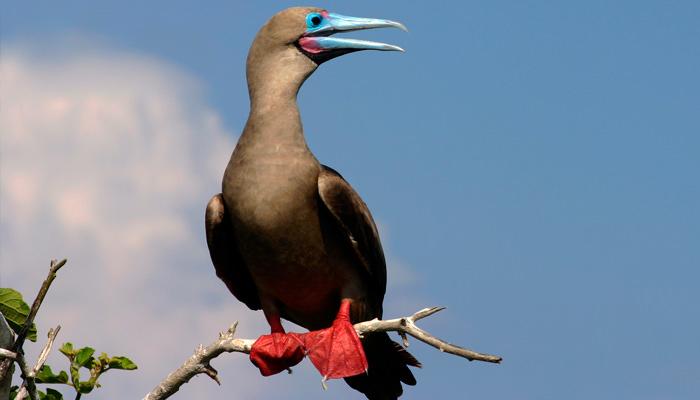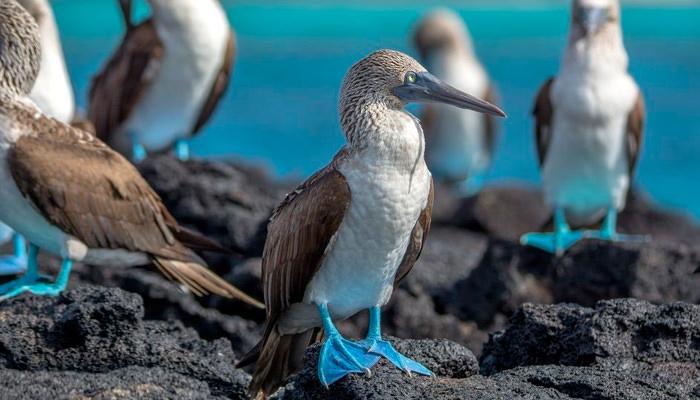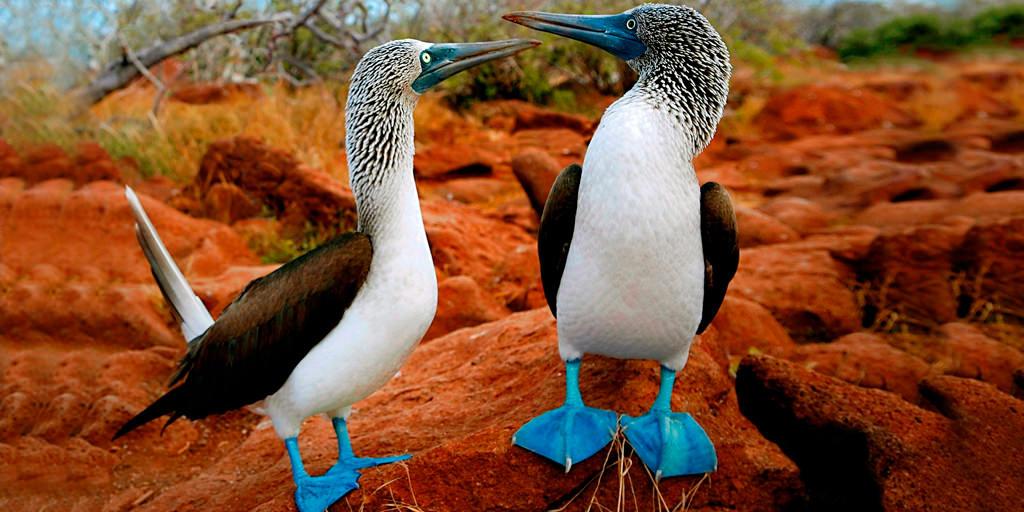Ecuador is such a diverse location that a theme such as Ecuador Interesting Facts encompasses varied regions in the country. The Galapagos Islands, specially, are renowned for their unique flora and fauna, which is something that you will not find elsewhere in the world.
Apart from playing host to some rare species of flora and wildlife, what’s interesting is that you will find most of them to be totally unaffected by the presence of humans amidst them. If you are an avid naturalist, this is the place, where you can simply enjoy the antics of iguanas, sea turtles and sea lions from close quarters, despite the warnings, given that these creatures usually cross your path, without any prior notice.
Here’s some interesting facts about blue and red footed boobies. Check it out.
One such truly beautiful and interesting species from the bird family that you get to see here in abundance are the boobies. Boobies or booby is a name that is derived from the Spanish word ‘Bobo’, which means a clown.
As boobies are clumsy and often foolish, the name is apt. If you were to witness these birds, you will understand just how well they live up to their name. There are different kinds of boobies inhabiting this archipelago and you will easily come across all of them while on your Galapagos Islands tour. However, the two main species, which we will be talking about today, are the Red footed and Blue footed boobies.
Before going into detailed facts about these two species, it is interesting to note that irrespective of the type of booby that we are talking about, the females are always a little larger than the males. Moreover, while both have yellow colored irises; the iris of the female booby is smaller while the pupil is bigger, because she needs them for better vision.
1.- Interesting facts about the Red Footed Booby

Known as Sula Sula, the red footed booby is the smallest of the species, with a body that is torpedo shaped and streamlined, has red feet and legs in addition to a pale blue bill. As these boobies dive for their food, the streamlined body shape is necessary as it aids them in this endeavor. Both sexes of this type of booby are similar in looks, with the sole exception of the females being larger and the males having a longer tail. Here are some individual interesting facts about this species.
Habitat
Incidentally, the red footed booby is an aquatic bird, living close to the ocean and finding land only during breeding times. When on your Galapagos Islands travel, you will notice that these birds are often found in the coastal parts, where the vegetation allows them to roost and breed in season and the nearby sea coast offers them a wide range of food to survive on. These birds usually nest with the Great Frigatebird. These birds do not migrate but live in these parts throughout the year.
Biology.
Despite being the smallest of the species, the red footed boobies are extremely strong and agile flyers, often traveling up to 150 kilometers for food. While they are agile in flying, take off is usually a problem, given that they need the wind to give them that push. So, you will often see them half running and half flying in an attempt to gain momentum. Their bodies, however, are perfect for plunge diving and they often do it when they spot fish or any kind of food in the sea.
It is indeed a beautiful sight to behold when they plunge from several feet above and catch their prey. Interestingly, this species forages for food in groups and often does it during the day, along with other sea predators. They are an outgoing bunch of birds, which live in huge colonies. The males of this species are known to attract the females by skypointing, which is a phenomenon where the bird throws its head back and points its beak to the sky. Females of this species are known to lay only one egg at a time unlike the other types of boobies.
2.- Interesting facts about Blue Footed Boobies.

Known as Sula nebouxii, these are large comical birds, with a spiky head, grey or dark greenish blue bill and distinctive blue feet. As with other booby species, here again the female is larger than the male while the male have longer tails. Interestingly, the blue feet of the males attract the females during breeding season. It is believed that the bluer the feet of the males, the more attractive they are to the females.
Habitat.
Like other species of boobies, except for the red footed boobies, the blue footed boobies are coastal species, where they forage in the sea during the day but live on land during the night. Rocky cliffs, coasts and islands are where these birds are found in large numbers.
Biology.
These boobies usually live together in huge groups of nearly 200 but are also known to have independent nests for couples. It is believed that this species of boobies mate for life, where mating can be both seasonal as well as when the opportunity strikes. Like other types of boobies, the blue footed boobies also believe in skypointing as the way to attract the females during the mating season.
The females of this species lay anywhere between one and three eggs at a time. This species does not believe in brood reduction, where the other chicks are often lost during the initial growth stages.
However, it is interesting to note that when food is less, chances of the eldest chick getting it is more, which would lead to the others being deprived of food. Another interesting aspect of this particular type of booby is that they use their webbed feet to keep their chicks warm. Moreover, both parents are involved in the feeding and caring of the chicks.
When comparing the two booby species, it is interesting to see that while the blue footed boobies nest on land, the red footed ones prefer the trees. Additionally, it is seen that the blue footed boobies prefer to forage for food in the waters present near the coastline while the red footed ones are known to go into deeper waters. Despite their differences and similarities, there is no doubt that this is one species that you need to see and enjoy during your Galapagos Islands travel.



Comments